SHRINES OF LIFE: PERUVIAN RETABLOS

- Receptions: Saturday, Oct. 19, 2-5pm & Thursday: Nov. 14, 6-9pm,
- Indigo Arts
- Wednesday - Saturday, 12 - 6:00 pm.
- Free & Open To The Public
With works by Claudio Jimenez Quispe, Mabilon Jimenez, Eleudora Jimenez, Luis & Julia Huamani, Javier Gonzalez and Pedro Gonzalez.
Shrines of Life celebrates the art of the contemporary Peruvian retablo. The retablo is a portable shrine or nicho that holds figures sculpted of pasta (a mixture of plaster and potato) or maguey cactus wood. The making of retablos is a folk art whose roots go back to the sixteenth century in the Andes. Spanish priests introduced small portable shrines in the 16th century to aid in the conversion of the Indian population. These were miniature houses made of wood that held images of saints. Over five hundred years this art form has evolved into the retablos that Indigo Arts exhibits today. While the art’s origins are religious, contemporary Peruvian retablos range from the sacred to the secular, to the profane.
Works by master “retablista”,Claudio Jimenez Quispe of Ayacucho, and other members of his extended family, such as Eleudora and Mabilon Jimenez, and Luis and Julia Huamani sculpt pasta figures to depict not just saints but scenes of daily life, commerce, romance, political strife and fantasy. Some of the recent work shows strong influences of Mexican folk art as well. In keeping with the season, Shrines of Life includes scenes of death and the underworld that celebrate the upcoming Dias de los Muertos (Days of the Dead) holidays, as well as some exquisite nativity scenes.
Javier and Pedro Gonzalez of Huancayo, Peru create retablos, santos and devotional crosses using a different technique from the Ayacucho artists. In a technique learned from their grandfather, Don Pedro Abilio Gonzalez Flores, they carve figures from maguey cactus wood, finishing it with a plaster gesso. Working in the tradition of Peruvian santeros, who carved saint figures for both churches and home altars, the Gonzalez brothers are known for the exquisite detail and sensitivity of their faces. Like the Jimenez family of Ayacucho, they also carve many figures of calaveras – skeletons – for the Days of the Dead.
Indigo Arts, a Gallery of Ethnographic, Folk and Contemporary Arts from Africa, Asia and the Americas, established in 1986, is located in the Crane Arts Building, Suite #104, 1400 North American St., Philadelphia, 19122. For further information contact Anthony Fisher at (215)765-1041, or go to http://indigoarts.com/news_shrines2013.html
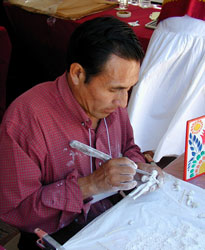
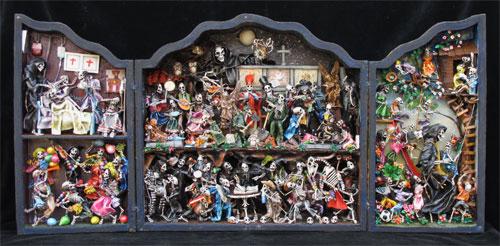
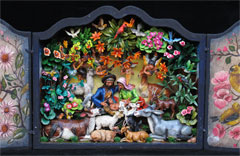
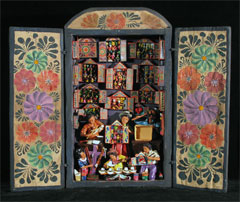
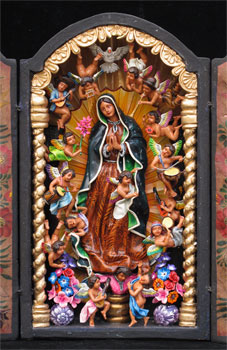
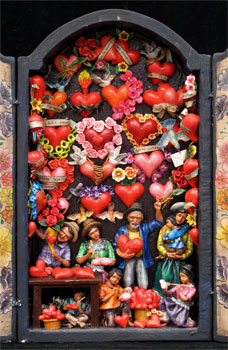
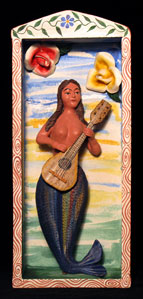
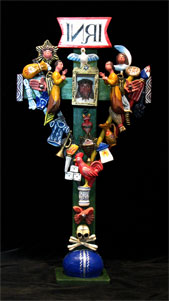
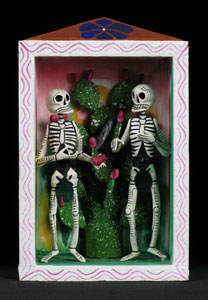

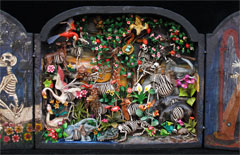
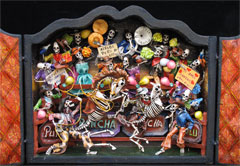
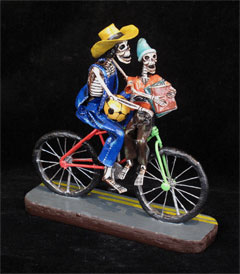
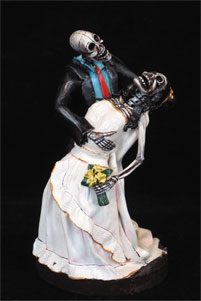
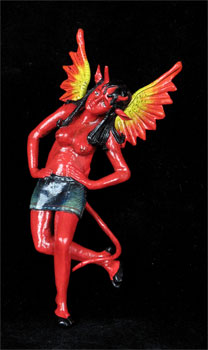
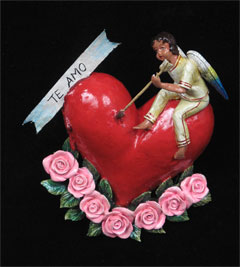
No comments:
Post a Comment